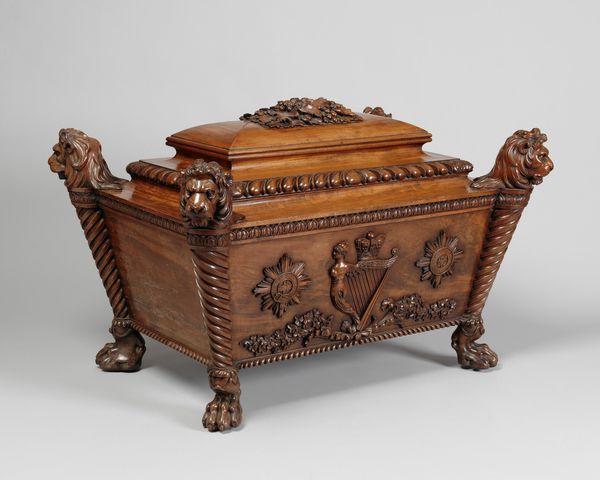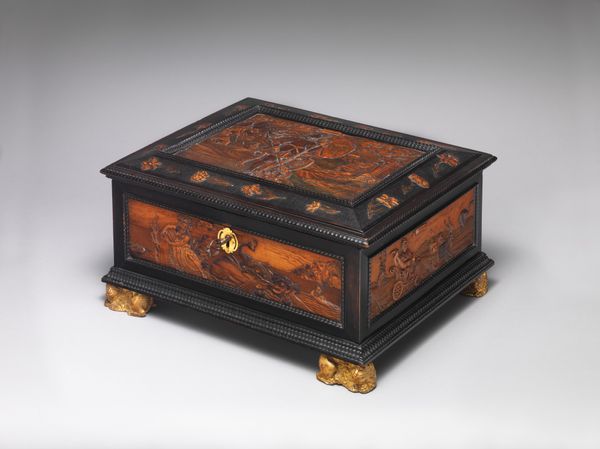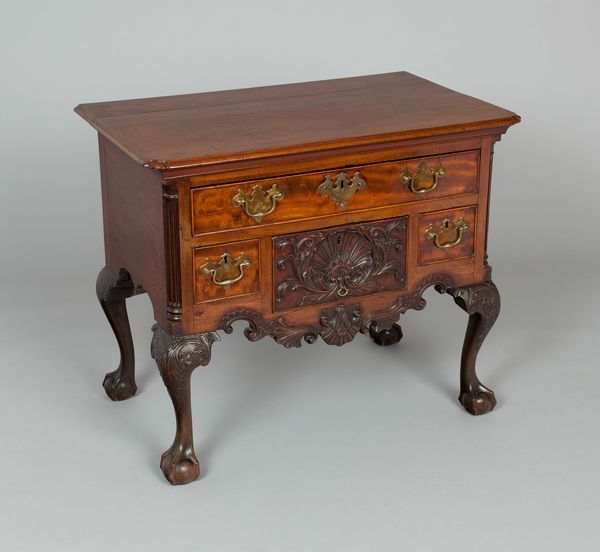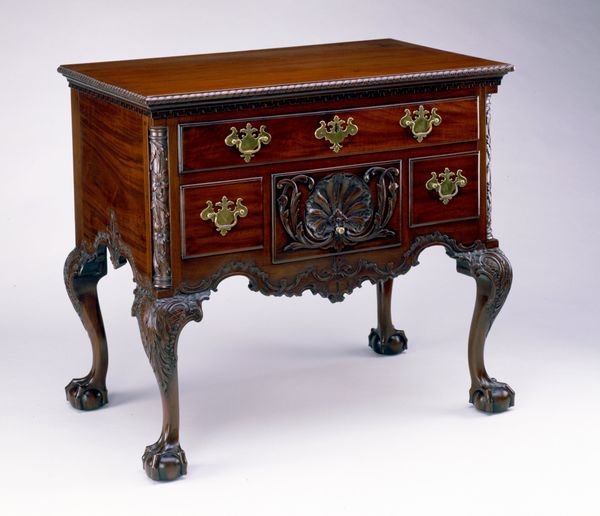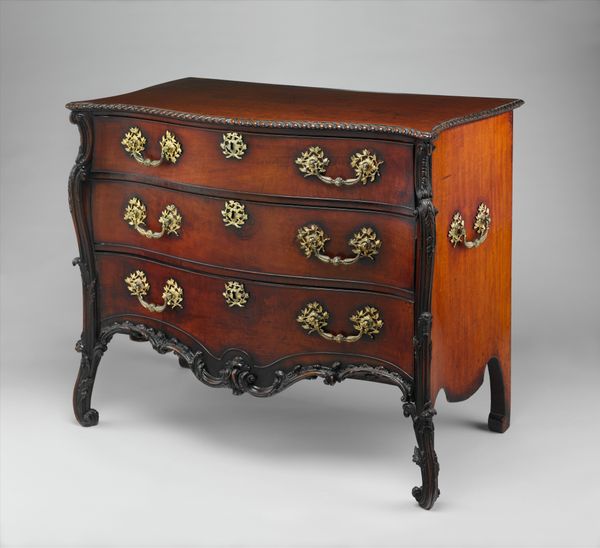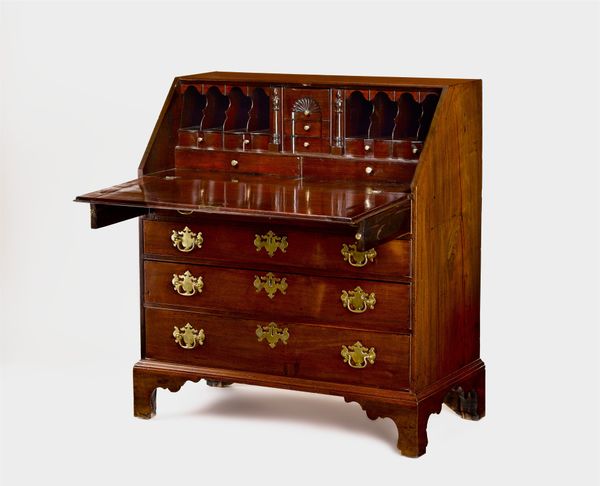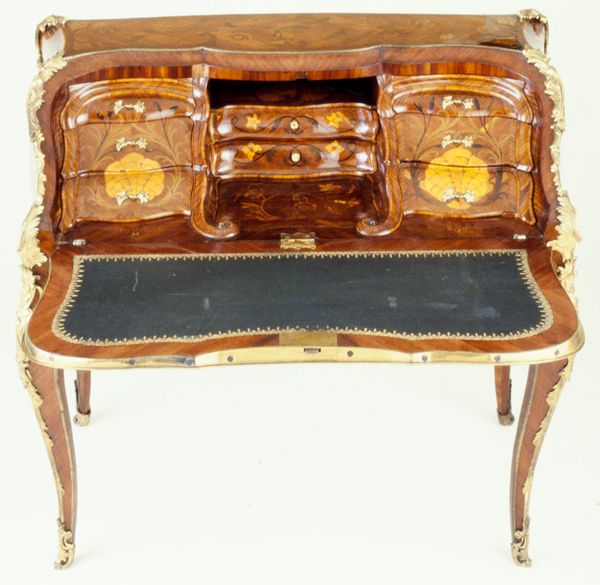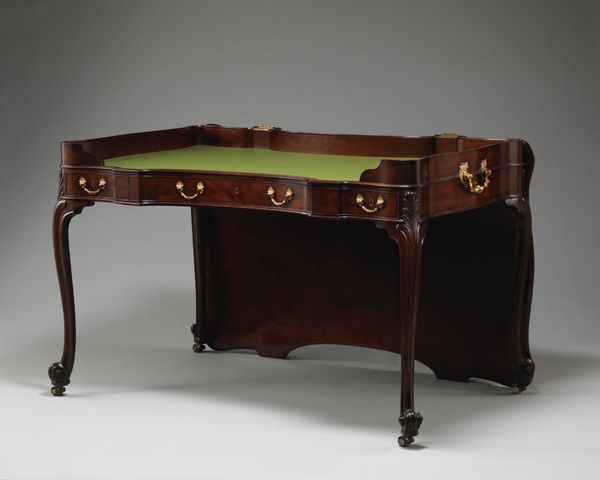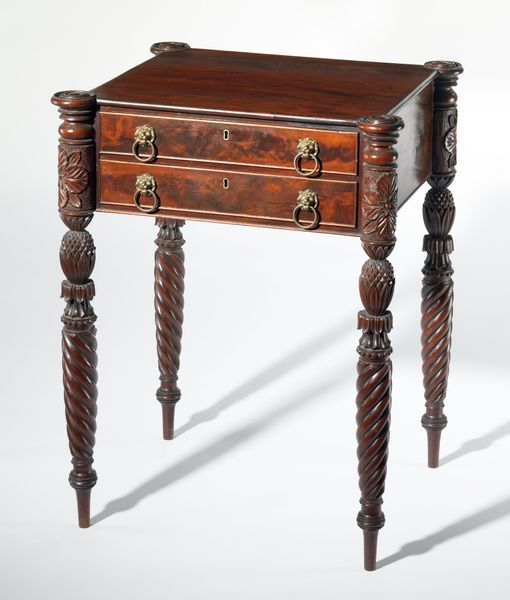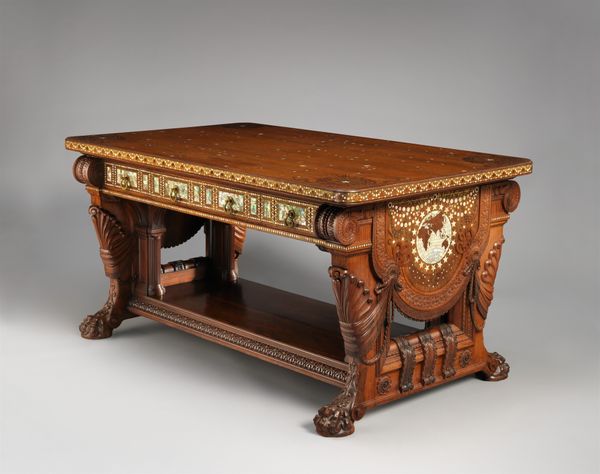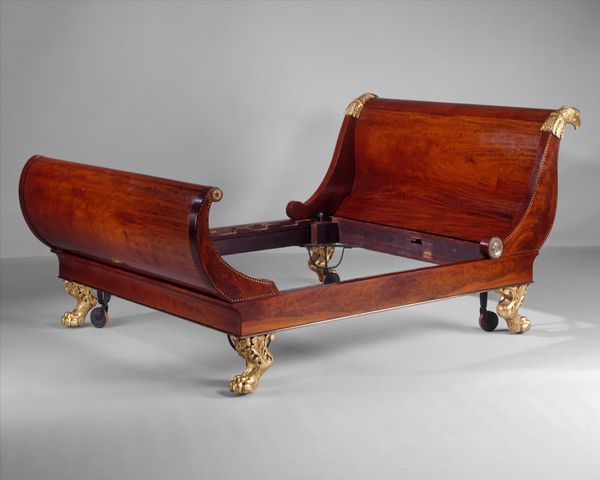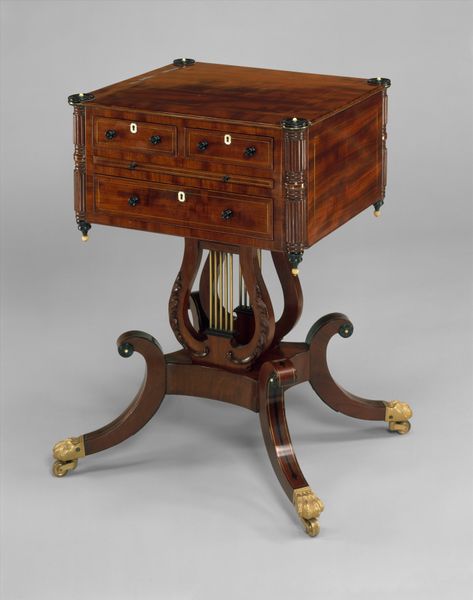
carving, wood
#
carving
#
baroque
#
geometric
#
ceramic
#
wooden texture
#
wood
#
earthenware
#
decorative-art
Dimensions: height 15.8 cm, width 30.2 cm, depth 20.5 cm, height 6 cm, width 12.2 cm, depth 8 cm
Copyright: Rijks Museum: Open Domain
Editor: Here we have an intriguing object at the Rijksmuseum, a game box with four smaller boxes from around 1734. It’s listed as being made anonymously. The wood carving gives it an ornate, baroque feel, almost like a miniature cabinet. What stands out to you when you look at it? Curator: I see the intensive labor involved in the carving and assembly. Wood was not just a material, but a resource carefully managed and manipulated. How do you think the material itself shapes our understanding of luxury at this time? Editor: That’s a good point. I guess I hadn't considered the economic value attached to the materials and the craftsmanship. The box feels decorative, almost frivolous now, but what did its materiality communicate back then? Curator: The varying grains and possibly types of wood point to broader trade networks. Each choice of material reflects consumption patterns, but also a specific act of skilled labor. Were these craftsmen considered artists, or simply laborers? What dictated that designation? Editor: So, looking beyond the aesthetics, the box becomes a window into the 18th-century economy and the status of the makers? It makes you consider all the work that went into creating something we now see as a decorative object. Curator: Exactly. Consider too the hardware and the lock. Do you believe it was primarily used for gaming? Perhaps holding precious personal items? It's a glimpse of material culture, not just an aesthetic object, and forces us to acknowledge how entwined aesthetics are with commerce. Editor: I now see the game box as this complex artifact, a product of very specific materials and social forces, it really puts the decorative-art label into perspective. Thanks! Curator: My pleasure, looking closely at materials truly opens a new way of approaching art history!
Comments
rijksmuseum about 2 years ago
⋮
Amber is fossilized resin, which in Europe is found primarily around the Baltic Sea. Amber from that region is approximately 40 million years old. Works of art in amber were crafted in Danzig (now Gdansk), along the Baltic Sea. This game box was probably a gift from King Frederick William I of Prussia to Prince William IV and Princess Anne of England on the occasion of their wedding in 1734.
Join the conversation
Join millions of artists and users on Artera today and experience the ultimate creative platform.
